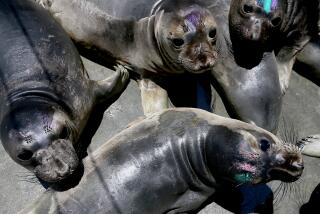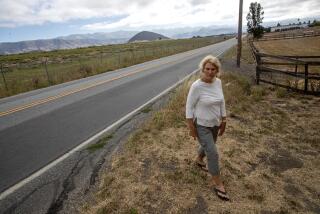Sea World Ordered to Clean Up Bay Wastes
- Share via
Local water pollution officials Monday ordered Sea World to clean up the waste water it is dumping into Mission Bay--a task that officials from the amusement park say means reducing the number of flamingos and waterfowl living in its bird ponds.
Regional Water Quality Control Board members issued the cleanup order to Sea World in response to the park’s “chronic lack of compliance” with its permit for discharging wastes into the bay since March, 1986, according to a staff report.
Specifically, the report cited Sea World for excessive coliform and chlorine, which have put the amusement park in violation of the permit during 15 of the past 30 months.
During that period, chlorine levels in the Sea World waste water exceeded the .1 milligrams per liter limit on 26 occasions, sometimes by as much as 700%, according to Christopher L. Sandall, an environmental specialist for the board.
Bird Droppings Blamed
In addition, on 16 occasions the aquatic park’s water was found to have coliform organisms--found in animal wastes--in excess of the body contact standard of 1,000 per 100 milliliters, Sandall added.
Sea World officials blamed the problem with coliform and chlorine on the amount of bird droppings they must treat and dispose of from the saltwater ponds throughout the park.
“These animals actually void themselves and urinate and defecate in the water,” said Jim Antrim, Sea World’s general curator.
“The reason why we use the chlorine is to oxidize and kill the bacteria” from the bird droppings, before they are dumped into the bay from the amusement park’s saltwater outfall, he said.
The amount of coliform organisms in the waste water will increase dramatically “if all of a sudden the birds decide to void themselves at one time,” Antrim said. Studies have shown that the biggest offenders have been the flamingos and waterfowl, such as ducks, geese and swans.
When the park tries to compensate by adding extra chlorine, it risks putting in too much and exceeding the allowable limits, he said.
In the past, Sea World officials have blamed their pollution problem on droppings left from wild birds such as sea gulls, that are not placed at the park but migrate in. Antrim concurred Monday that those birds, which account for about 50% of the feathered population at Sea World, will always contribute to the problem of animal droppings.
“Obviously, when you have a large number of people spilling popcorn and French fries onto the sidewalks at Sea World, these birds will be around to scavenge the food,” Antrim said.
But the cleanup plan proposed by Sea World last month and approved by the board Monday doesn’t deal with the migrating birds. Instead, it says the park will begin thinning out its own hand-picked bird population by giving away 100 of the 1,100 to 1,200 of its flamingos and waterfowl.
The birds will be offered to Sea World’s sister amusement parks in Cleveland, San Antonio and Orlando, or to other zoological institutions, Antrim said. At no time will the park try to kill any birds, he said.
Also, the park will more closely regulate the amount of chlorine it uses in its waste water, Antrim said. It will perform spot chlorination in the bird ponds and dechlorinate the water before it is dumped from the park’s outfall pipe into Mission Bay.
Sea World has until Nov. 14 to see if these measures will mean cleaner waste water, according to Monday’s order.
If they fail, the order then requires the amusement park to build a special on-site chlorination facility by September, 1989, to clean up the waste water. Antrim estimated the facility’s cost at $100,000 to $300,000.
More to Read
Sign up for Essential California
The most important California stories and recommendations in your inbox every morning.
You may occasionally receive promotional content from the Los Angeles Times.













